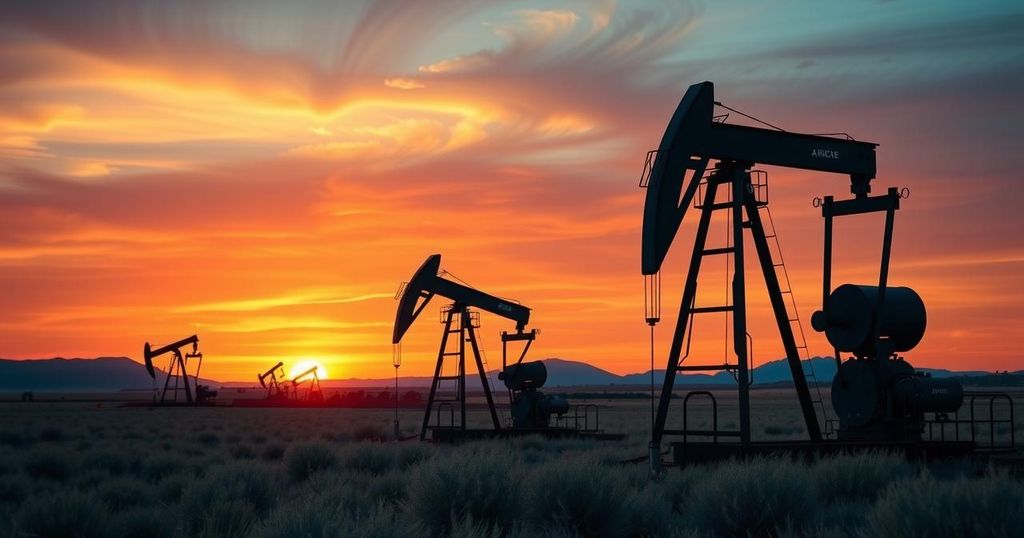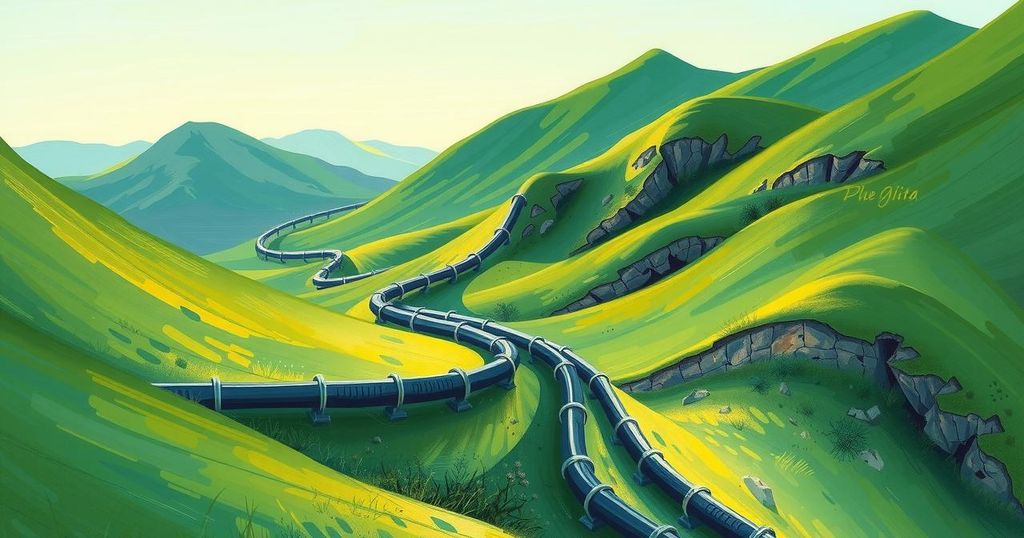Argentina’s President Javier Milei has introduced austerity measures that are revitalizing the economy and attracting investments to Vaca Muerta, a significant shale formation. With anticipated production growth, Argentina is set to become South America’s third-largest oil producer by the end of 2024, with ongoing investments in infrastructure expected to support further expansion.
Argentina’s newly elected president, Javier Milei, has initiated strict austerity measures to combat extreme inflation while revitalizing the economy and reducing a substantial fiscal deficit. Early indications suggest that inflation rates are decreasing and economic growth is on the resurgence, attracting interest from foreign investors. This renewed economic environment has significantly increased investment within the expansive Vaca Muerta shale region, boosting oil and gas production. By the close of 2024, Argentina is projected to surpass Colombia as South America’s third-largest oil producer, with substantial projected growth ahead.
The Vaca Muerta shale formation, spanning 7.7 million acres in Neuquén province, is recognized as one of the most significant hydrocarbon-rich geological formations globally. Often compared to the Eagle Ford shale, its quality is now regarded as comparable to that of the influential Permian Basin. The U.S. Energy Information Administration estimates the Vaca Muerta to contain 16 billion barrels of recoverable shale oil and 308 trillion cubic feet of natural gas, positioning it as the world’s fourth-largest shale oil resource.
While the formation was identified by Repsol in 2010, it was only following the nationalization of Argentina’s YPF in 2012 that serious exploitation commenced. Since then, the production of hydrocarbon in the Vaca Muerta has grown dramatically, increasing from 45,000 barrels per day in 2014 to an expected 453,000 barrels daily by December 2024. The Vaca Muerta now accounts for approximately half of Argentina’s hydrocarbon output, a stark increase from little over a decade ago.
Argentina’s total oil production is expected to achieve an all-time high of 702,000 barrels per day in 2024, reflecting a remarkable 10.5% year-over-year increase. In December 2024, production reached 757,122 barrels daily, surpassing Colombia’s output to make Argentina the third-largest oil producer in South America, with contributions mainly from Vaca Muerta.
Prospects for further growth in Argentina’s hydrocarbon production are promising, with significant investments set to advance the Vaca Muerta shale’s development. Since the beginning of 2024, operators are estimated to have invested over $9 billion, focusing on enhancing the crucial petroleum infrastructure, including pipelines and storage facilities.
YPF, Argentina’s national oil company, leads in production and investment, contributing significantly to the Vaca Muerta’s output. In 2024, YPF invested $3 billion in its shale operations, accounting for 55% of the country’s shale oil and a substantial proportion of shale gas production. The company is also set to ramp up investment to strengthen Argentina’s hydrocarbon sector further.
Foreign oil companies, particularly those recognized as Big Oil, are increasingly investing in the Vaca Muerta. Data illustrates that among the top five oil producers in the region, three are foreign entities. Vista Energy, Shell, and Pan American Energy are notable contributors, collectively accounting for a significant portion of the shale oil output.
Looking forward, YPF plans to invest $5.5 billion in operations for 2025, with a substantial part allocated to Vaca Muerta. Anticipated production increases are expected to be substantial, with projections showing a 30-40% rise in shale oil output. The overall investment in Vaca Muerta could reach $15 billion in 2025, supporting the construction of critical infrastructure.
A major infrastructure project is the $3 billion Vaca Muerta Sur pipeline, primarily funded by YPF along with contributions from Shell and Chevron. The pipeline, designed to connect Vaca Muerta to a new export terminal, aims to enhance transport capacities significantly and facilitate additional production growth.
By the end of this decade, Vaca Muerta is expected to produce one million barrels per day, potentially making Argentina the second-largest oil producer in South America and third-largest in Latin America. Such growth could elevate Argentina’s GDP by approximately $10 billion by 2030, with oil and gas exports projected to surpass $21 billion, enhancing the overall economic landscape and supporting President Milei’s reforms.
In summary, Argentina’s economic landscape is witnessing a transformative period driven by the Vaca Muerta shale formation. With impressive growth in oil and gas production, strategic investments, and infrastructure development, the nation is poised to become a leading oil producer in South America. As Argentina navigates through economic reforms under President Milei, the increasing output from Vaca Muerta could yield significant benefits, bolstering both the economy and foreign investment. This trajectory offers hope for economic stability and growth for the nation.
Original Source: oilprice.com




